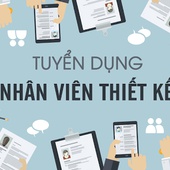Vietnam Social Insurance System
Social insurance is a type of insurance, which is funded by the national budget and only applied for labors and the labor users. The purpose of this insurance is to support the labor in case that they cannot come to work like diseases, maternity and retirement, or they suffer from occupational diseases or work accidents.
 Photo : baomoi.com
Photo : baomoi.com
The social insurance in Vietnam consists of two main types: compulsory insurance and voluntary insurance, but in some special case, the labor also have to buy unemployment insurance. The employers will pay the insurance fee monthly for the employees by deducting part of their monthly salary, and the payment rate for insurance is various depending on the types of insurance and the conditions of the payers.
The supportive money to the employee will be calculated based on the insurance’s time and level of payment.
Compulsory social insurance:
This is the insurance that the employee must purchase when they are at work. At present the monthly rate for this insurance is 6% of the monthly salary, and this rate will be raised in the future. The compulsory social insurance is used for the cases below:
* Sickness: This policy is used for both sickness of the employees and their children under 7 years old. The subsidies rate in this case is from 45 to 100% the income of the nearest month before leaving based on the insurance payment time and the absent time.
* Maternity: This is applied for all women who give birth, adopt kids, abort or sterilize. The subsidies for women in this case are 100% the average income of the sixth nearest months, in addition to an one-time support of 2 month salary. Time to receive the subsidies is 4 to 6 months for those who give birth or adopt kids, and 7 to 50 days for abortion or sterilization.
* Occupational diseases and accident: this is only used for employees who suffer from work accidents at or outside the office when conducting the work, diseases caused by working condition and lose 5% of the working capabilities. The insurance subsidies for this case include a one-time support with the lowest amount of 1 month salary , and another monthly support with the lowest proportion of 30% of the lowest average salary.
* Retirement: In Vietnam, the retired employees receive the monthly pension of 45% of the average monthly salary if they have paid the insurance fee for 15 years. After that, additional subsidies for each extra year they paid the insurance fee will be sent to them with the rate of 2 % for men and 3% for women, but the highest rate must not excess 75%.
* Death: Subsidies for the death of the employees are sent to their relatives. There are two types subsidies, either lump sum payment or monthly, and the relatives of the death can only receive one of these two types of support. Subsidies is calculated based on the insurance payment time with the rate of 1.5 the average salary for one month, and with monthly subsidies, the rate is 50% to 70% of the average salary.
Voluntary Social Insurance
This type of insurance is not mandatory, and employees can choose to purchase it or not. The benefit of buying this insurance program is to increase the subsidies for them and their relative when they retire or die. The amount of this insurance is calculated by multiply the monthly income with the voluntary insurance ratio (18% at present). Monthly income is chosen by the insurance payer, with the lowest rate equal to the one month salary and the highest rate of 20 month salary. The insurance fee will be paid monthly, quarterly or each 6 months
Unemployment Insurance
This type of insurance is applied compulsorily to the labor and their users in some special conditions. To receive the subsidies from this insurance, the employee must register to the insurance organization and pay unemployment at least 12 months in the nearest 24 month before being unemployed. The subsidies of this insurance are equal to 60% of the average salary of the nearest 6 months before being unemployed and paid from 3 to 12 months, depending on the time that the employees have paid the insurance fee before.











